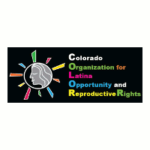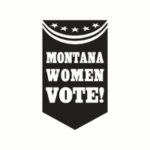Lifting Economic Policies that Support All Families
What if our elections centered the economic needs of our families? What if conversations about work were centered on the experiences of low-income workers, domestic workers, and the workers who make up our diverse families and communities?
This tool helps to put today’s diverse workers—from women to LGBTQ individuals to people of color—at the center of the conversation about economic policy. From questions about paid sick days to increasing the minimum wage to non-discrimination, we’ve found the latest data that incorporate race, gender, and sexuality, and created questions that can be used in a variety of contexts this election season.
Who Can Use This Tool?
Anyone can use this tool!
If you are a 501c3 organization, you can use the questions in candidate surveys, forums, and to frame conversations with your members.
The guidelines below are some best practices for c3 election compliance, but are not a comprehensive list. For more complete guidance about specific communications, consult knowledgeable counsel.
- You may want to adjust the questions to include your own state-level data. As much as possible, use local or state data sources that are neutral. Include the citations of all data.
- Leave the questions open ended instead of making them yes/no questions. n Solicit candidate responses from all candidates running for office, not just a single party.
- If you receive responses from only some candidates in a given race, make and document outreach efforts to the remaining candidates and describe them (along with contact information for those candidates) in any public distribution candidate responses.
- Do not edit candidate responses in any way, including correcting spelling or punctuation errors. If your organization has a word limit, make it clear that responses that exceed the limit will be cut short.
- Avoid any commentary that indicates which candidate response is better.
- Contact a lawyer who understands the federal tax rules governing election-related activity by a 501c3 organization. Visit the Alliance for Justice website to see additional materials on c3-permissible activities.
If you are a 501c4 organization, you can use the questions to assess candidates and make organizational endorsements; in candidate surveys and forums; and to frame conversations with your members.
Equal Opportunity
LGBTQ Non-Discrimination
Currently, explicit sexual orientation and/or gender identity non-discrimination laws do not exist in over half of states in the U.S., which means that LGBTQ individuals can be fired, denied care, or thrown out of their homes without any recourse. Without legal protections, LGBTQ workers face discrimination that makes it harder for them to find and keep a job and provide for their families. Census data analyses confirm that in nearly every state, men in same-sex couples earn less than men in heterosexual marriage, and lesbians and bisexual women are more likely to live in poverty than are heterosexual women. A national survey of transgender individuals found that 47% of respondents had been discriminated against in hiring, promotion, or job retention. And 26% of Latina/o transgender individuals have been terminated from their jobs because of bias.
Question: How, if at all, would you address ongoing discrimination for LGBTQ people (including any type of legislative solutions)?
Religious Exemptions
Religious exemption laws permit people, churches, non-profit organizations, and sometimes corporations to seek exemptions from state laws that burden their religious beliefs. Today, 21 states have some version of a Religious Freedom Restoration Act (RFRA).
Compared to the general U.S. population, the LGBTQ community already experiences higher rates of employment discrimination as well as discrimination in accessing healthcare. This is exacerbated for LGBTQ people of color: 36% of Latina/o transgender persons have postponed needed healthcare because they feared discrimination. Even without employer interference, LGBTQ persons are refused treatment by their providers and healthcare facilities on the basis of discriminatory personal beliefs.
Religious exemptions also allow healthcare professionals and institutions to refuse to provide comprehensive reproductive healthcare services, impacting access to birth control, sterilization, and abortion services. Seventeen states allow individual providers to refuse to perform sterilizations, 6 states permit pharmacists to refuse to fill contraception prescriptions, and 45 states allow individual providers to refuse to perform abortions.
Recent polls show that by a wide margin, Americans strongly favor equal treatment under the law over accommodating individual religious objections when the two come into conflict. In fact, two-thirds of frequent church attenders agree that “treating equally under the law” is more important, as well as 93.8% of infrequent church attenders.
Question: How would you protect religious liberty and respect individuals’ rights to receive basic services without being discriminated against?
Equal Pay
Comparing women’s and men’s median earnings for full-time, year-round workers shows a significant pay gap based on gender. No matter what data are used, women on average are paid less than men and workers of color are paid less than White workers. White women in the U.S. who work full time, year round are on average paid only 78 cents for every dollar paid to their White male counterparts. For women of color, these disparities are even greater, Black women make only 61 cents, Native American women make only 59 cents, Latinas make only 55 cents, and Vietnamese, Samoan, and Laotian women in the Asian Pacific Islander community make 61 cents to each dollar earned by White men. For the LGBTQ community, gender discrimination has even greater impact on lesbians’ wages than discrimination based on sexual orientation.
Question: How, if at all, would you address the pay gap (including any type of legislative solutions)?
Pregnancy Non-Discrimination
According to the U.S. Census Bureau, 66% of mothers who had their first birth in 2006-2008 worked during pregnancy, an increase of 22% from 1961-1965. Among those pregnant women working in 2006-2008, 88% worked in their last trimester, and 65% worked into their last month of pregnancy. Additionally, 2011 saw an increase of almost 70% in the number of pregnancy discrimination charges filed with the Equal Employment Opportunity Commission and Fair Employment Practices Agencies compared to 1997. Furthermore, one report estimates that more than one-quarter million pregnant workers are denied requests each year for reasonable accommodations at work.
Question: How, if at all, would you respond to the ongoing existence of pregnancy discrimination facing women in the modern workplace (including any type of legislative solutions)?
Ban The Box
Nearly 10 million adults return to communities from jails and federal and state prisons each year in the U.S., and they face significant challenges. Communities of color; lesbian, gay, bisexual, and transgender individuals; and people with histories of abuse or mental illness are disproportionately impacted by the criminal justice system. As a result, between 70 million and 100 million – or 1 in 3 Americans – have some type of criminal record.
A closer look at criminal justice data reveals sharp racial disparities. Black men are six times more likely to be incarcerated than White men, and Latino men are 2.5 times more likely to be incarcerated than White men. In many states, people with felony drug convictions are banned for life from receiving certain kinds of assistance. In 12 states with the most restrictive policies, 180,000 women are subject to the lifetime ban on Temporary Assistance for Needy Families.
With 84% of for-profit companies conducting background checks, a criminal record is a major barrier to employment. But many states and local jurisdictions, including 21 states and over 100 cities and counties, have taken steps to remove barriers to employment for qualified workers with records. Beyond employment, banning the box will affect housing, public assistance, education access, and the ability to build good credit.
Question: How, if at all, would you address the economic disparities resulting from incarceration that manifest in employment and wages, and in access to public assistance, housing, and education (including any type of legislative solutions)?
Economic Security
Tipped Waged and Workers
Nearly 12 million people work in the restaurant industry, but just 20% of restaurant jobs provide a “living wage.” Of all workers earning below the minimum wage, 65% are restaurant workers.More than 35% of all tipped workers are women of color, and almost two million women restaurant workers are mothers. The tipped wage also contributes to sexual harassment in the workplace, and tipped restaurant workers who make $2.13 per hour experience twice the harassment as restaurant workers who make the full minimum wage.
Question: How, if at all, would you address the economic disparities resulting from the tipped minimum wage (including any type of legislative solutions)?
Minimum Wage
The federal minimum wage is currently set at $7.25/hour, and has not been raised since 2009. Women are nearly two-thirds of all minimum wage workers. Women of color are 23% of minimum wage workers, compared to 16% of all workers. Full‑time, year‑round work at the federal minimum wage of $7.25/hour leaves a woman with two children thousands of dollars below the poverty line. These disparities are even greater when looking at families led by women of color: 43% of Black women-led households and 42% of Latina-led households fall below the poverty line. Minimum wage laws exempt many types of work done primarily by women of color, including domestic work, seasonal work, and tipped work.
Question: How, if at all, would you address the economic insecurity faced by women and families in low-wage jobs (including any type of legislative solutions)?
Earned Income Tax Credit
The Earned Income Tax Credit is a benefit for low to moderate income working people that reduces the amount of tax you owe. In 2013, the Earned Income Tax Credit lifted about 6.2 million people out of poverty, and made nearly 22 million other people less poor. Among those who claim the EITC are more than 5 million African American workers. Other communities that are disproportionately lower income, including the LGBTQ community, also benefit significantly from this credit.
Question: What, if anything, would you do to ensure that our tax system helps lift people out of poverty (including any type of legislative solutions)?
Safety Net
Safety net programs provide vital support to many working families. Nearly three-quarters of the people helped by programs geared to the poor are members of a family headed by a worker. Without programs like Medicaid, food stamps, or child care subsidies, working families would not have the necessary support to pay for basic needs.
Question: What, if anything, would you do to ensure that working families have the necessary support to pay for basic needs (including any type of legislative solutions)?
Work-Family Flexibility
Paid Sick Days
Paid sick time is the hours that workers accrue in a given work year to use to take care of themselves and their loved ones for health and medical conditions. Typical laws can guarantee workers the ability to earn up to 9 days worth of paid sick time in a year. Estimates show that 43 to 48 million workers in the US do not have access to earned sick time. Women of color are disproportionately represented in job sectors that are less likely to provide paid sick days, such as domestic work, retail, and restaurant industries. Twenty-five percent of workers have been threatened with job loss after taking time off to care for themselves or to navigate the consequences of domestic violence or sexual assault. Low-wage workers often don’t have the time they need to access medical care and navigate other services when they experience domestic or sexual violence.
Question: What, if anything, would you do to ensure that workers don’t have to choose between taking care of themselves or their families and their job (including any type of legislative solutions)?
Paid Family and Medical Leave
The federal Family and Medical Leave Act provides up to 12 weeks of unpaid, job-protected time off to bond with a new child, address a worker’s own serious illness, or care for a seriously ill family member. Federal law does not require that workers receive paid family leave for these purposes. Three states, California, New Jersey, and Rhode Island, have passed laws guaranteeing paid family leave to workers. Only five states, California, New Jersey, Rhode Island, Hawaii, and New York, have passed laws guaranteeing temporary disability insurance – or financial support to workers with off-the-job illnesses or injuries (including pregnancy and recovery from childbirth).
According to the U.S. Bureau of Labor Statistics, only 12% of private-sector workers in the United States receive paid family leave from their employer to bond with a new child or care for a seriously ill family member. Low-wage workers have lower access to paid family leave, with only 5% of workers in the lowest quarter of wage earners (who are predominantly women and men of color) receiving paid family leave from an employer. Only 37% of workers – and 18% of workers in the lowest quarter of wage earners – have personal medical leave through an employer-provided short-term disability program.
Research suggests that many workers – and particularly LGBTQ workers – have a need for paid family and medical leave. In addition to an increased risk of cancer, LGBTQ Americans have shown high incidence of chronic conditions like diabetes, arthritis, and HIV/AIDS. American Indian and Latino/a transgender people are parenting or financially supporting a child at higher rates than the transgender population as a whole. Furthermore, Black and Latino/a LGBTQ couples are more likely to be raising children and struggling financially than White LGBTQ couples.
Question: How, if at all, would you respond to these figures on paid family leave access (including any type of legislative solutions)?
Family Definition In Workplace Leave
America’s families are changing. While many policies define “family” according to the nuclear family model of a married mother and father and their biologically related children, the 2010 US Census revealed that 79.8% of our country’s families do not look like that. Approximately 1 in 4 Latinos, African-Americans, and Asians live in multigenerational households, and 1 in 5 households in the US with children include nonrelatives or relatives other than the child’s parents and siblings. LGBTQ-identified seniors in the U.S. are twice as likely as heterosexual seniors to live alone and more than four times as likely to be childless – thus relying on families of choice who are not legally or biologically related, but have close relationships that are equivalent to family. Many workers do not have access to paid sick time or paid family leave to care for a family member, and if they do, the definition of “family” in these policies may be narrow.
Question: How, if at all, would you respond to family definitions in public policy (including any type of legislative solutions)?
Scheduling Transparency
Among low-wage hourly workers in jobs with standard (Monday through Friday, daytime) schedules, approximately 51% of full-time workers and 42% of part-time workers report having very little or no control over their work schedules. Approximately two-thirds of hourly, low-wage, full-time workers in jobs with standard schedules and three-quarters of full-time workers in jobs with nonstandard (other than Monday through Friday, daytime) schedules have no choice regarding their start or end times. Research has shown that such scheduling makes arranging child care a struggle. Among a representative sample of early-career adults aged 26 to 32 years, approximately 90% of food service workers and 87% of retail workers reported that their hours varied in the past month, and 64% of food service workers and 50% of retail workers reported knowing their schedule a week or less in advance. Moreover, Black and Latino workers were more likely than White workers to only know their schedule a week or less in advance.
Question: How, if at all, would you respond to such scheduling inflexibility and unpredictability (including any type of legislative solutions)?








